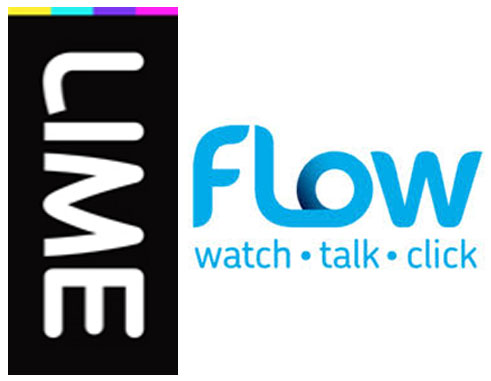
The proposed merger between Cable and Wireless Communications’ and Columbus Communications—better known as LIME and FLOW respectively—has been drawing some controversy. The Caribbean Telecommunications Union (CTU) has held multiple meetings about the deal, and just last week the CARICOM Competition Commission raised concerns that the deal could “distort competition.”
Although not the focus of the meeting, the deal is surely being discussed at the CTU’s 25th Anniversary ICT Week, currently underway in Port of Spain. Coming in at US$3 billion, it is a big merger by any measure, and regulators are right to examine the deal on a regional basis. But it is important to see this merger for what it is: a big down payment on future investment in communications infrastructure for the Caribbean.
The communications industry is fundamentally about networks, and these networks operate under different economics than other sectors of the economy. Users are ultimately better served by effective competition between a small number of larger firms than a large number of smaller firms. Telecommunications networks simply do not operate under the same economics of, say, a T-shirt vendor. When it comes to selling T-shirts, the more competitors in a market, the better—fierce competition pushes down prices and increases quality. Not so in telecoms—after a certain point, more competitors leaves all the networks with the same costs, but reduce the number of customers each has to recoup the cost of building, operating, and upgrading a network, ultimately reducing investment in the region overall.
Because of these economics, it is likely that this merger is in the interest of both paying customers and the region as a whole. Such an expansion would streamline operations and cut down on costs, with savings ultimately flowing to consumers. Beyond just the immediate synergies and efficiencies of a combined LIME–FLOW, such a firm, with a larger customer base, would have the scale to effectively continue investing in the region. Some critics of the deal seem to be thinking these networks are like T-shirts. Given the vague statements from CARICOM, it’s not clear that they aren’t taking this narrow view as well.
We should also take care not to have too static a view of these services in what is a rapidly changing industry. The classic telecommunications services—voice and video—are quickly converging onto the same platform, with these services provided over the same Internet protocol as broadband data traffic. This means that the Caribbean will see effective competition between different technological platforms offering similar services—think of Digicel’s offering of TV programmes over their mobile network. In a world of dynamic competition and convergence, the particular type of infrastructure owned by any particular company matters less and less. This merger is a prime example of exactly this sort of dynamic competition—with CWC reacting to the fast-growing Digicel.
Digicel is, of course, originally a mobile phone operator, but has been aggressively leveraging their high-margin mobile business to expand into other areas. Indeed, Digicel has been busy, buying up cable operations in six markets throughout the region, building out fibre in Barbados, Haiti, Jamaica, and Trinidad, and investing in submarine fibre assets. These are smart expansions for the company, and LIME is right to respond in turn.
Contrary to the fears of some, the back-and-forth between Digicel and LIME is exactly the type of effective competition that will continue to drive investment and economic growth in markets throughout the Caribbean for years to come. Digicel has a significant lead on LIME in terms of revenue in many markets—to liken this deal to reverting to monopoly is not just factually inaccurate but fundamentally misunderstands the nature of telecommunications competition in the 21st century.
Doug Brake is a telecom policy analyst with the Information Technology and Innovation Foundation in Washington, D.C.















from the look as a customer:
if there are 2 different companies you can choose price/service and if you not satisfy with the one you are (on whatever reason) you can switch.
if there is no more competition = You have to take it if you like it or not !!!
Everyone can remember the past when C&W had a monopoly in telecommunication. Only when Digicel came into the market C&W made adjustments in favor for the customers.
With a merger between FLOW and C&W the same thing is most likely repeated again,
In business only profit counts ! and max profit is when you can dictate the price.